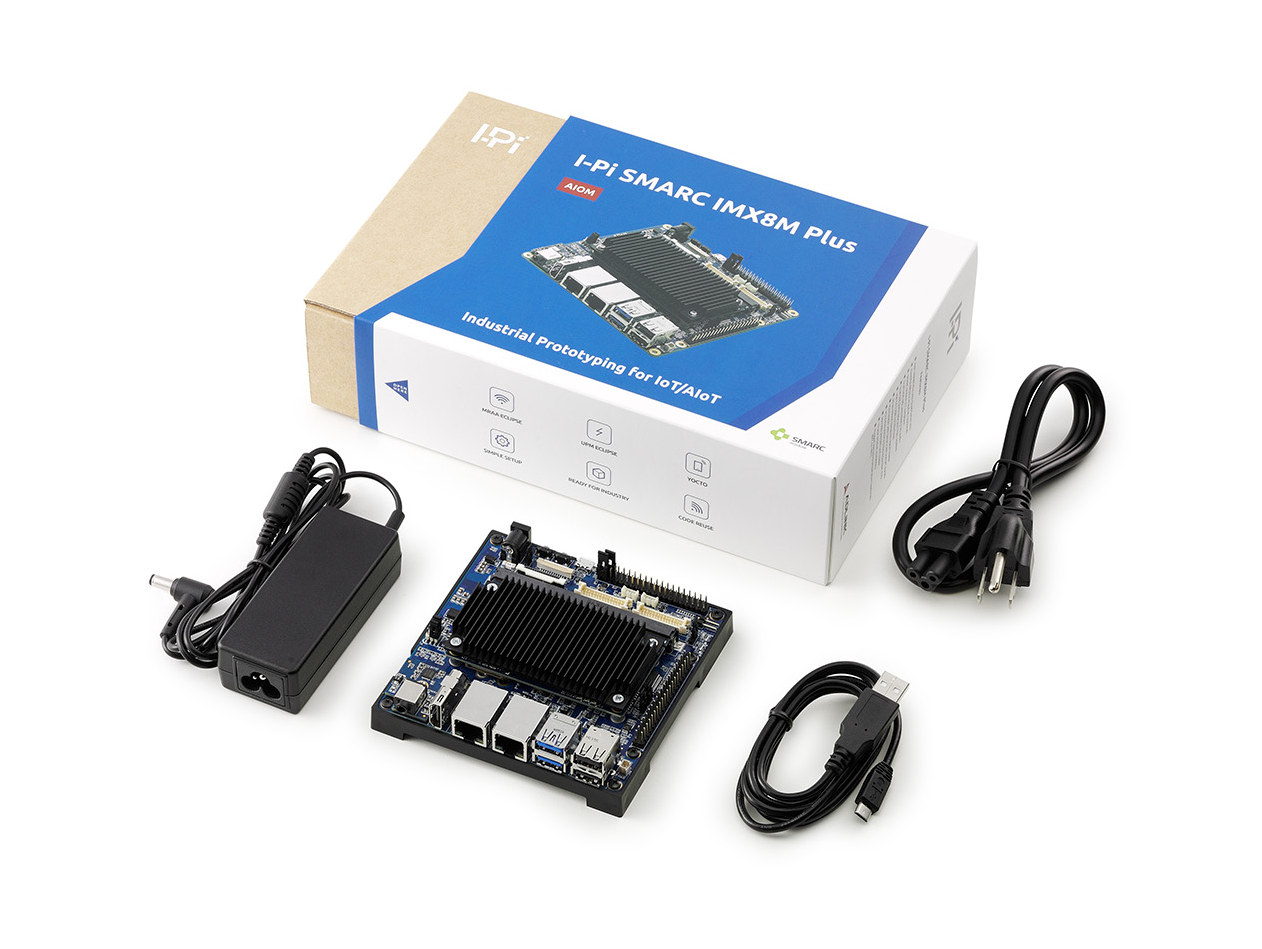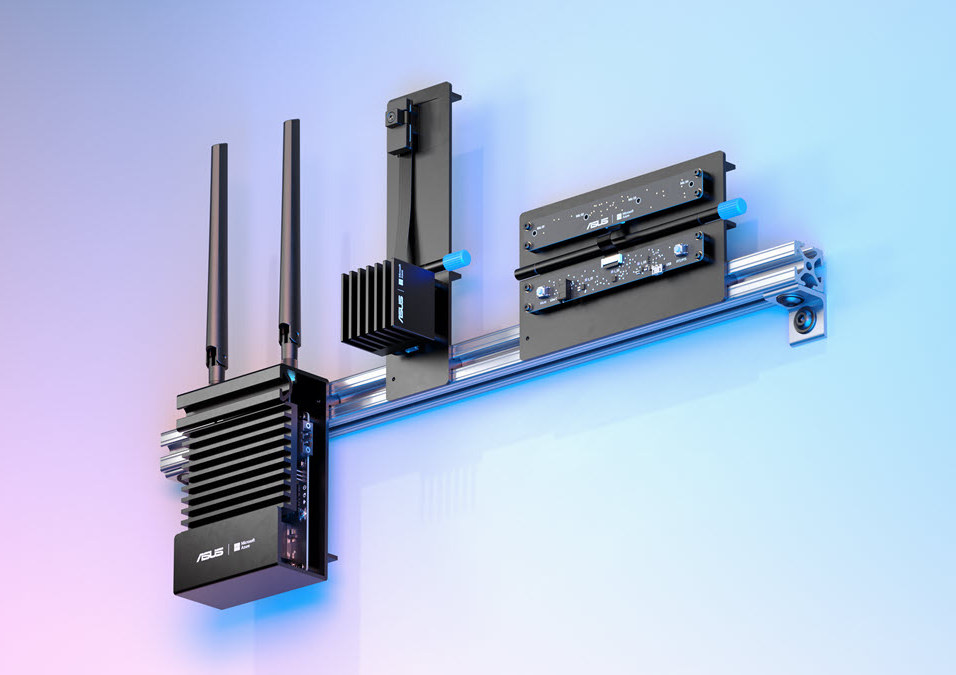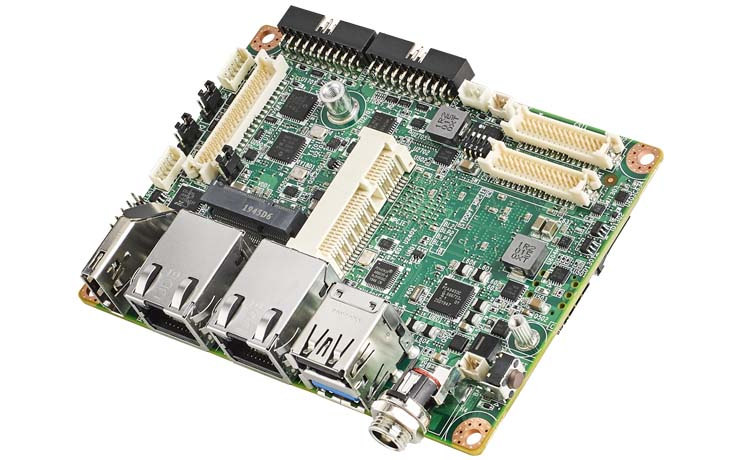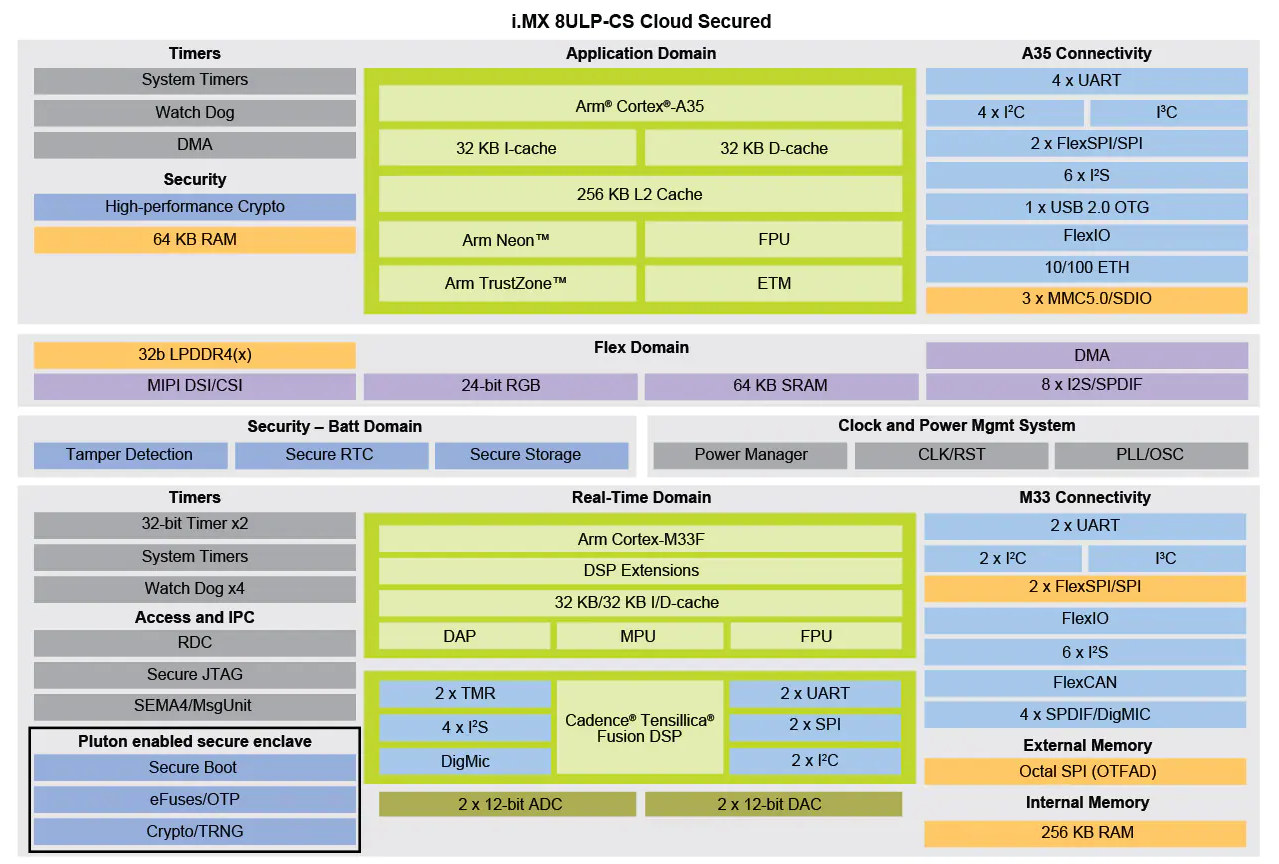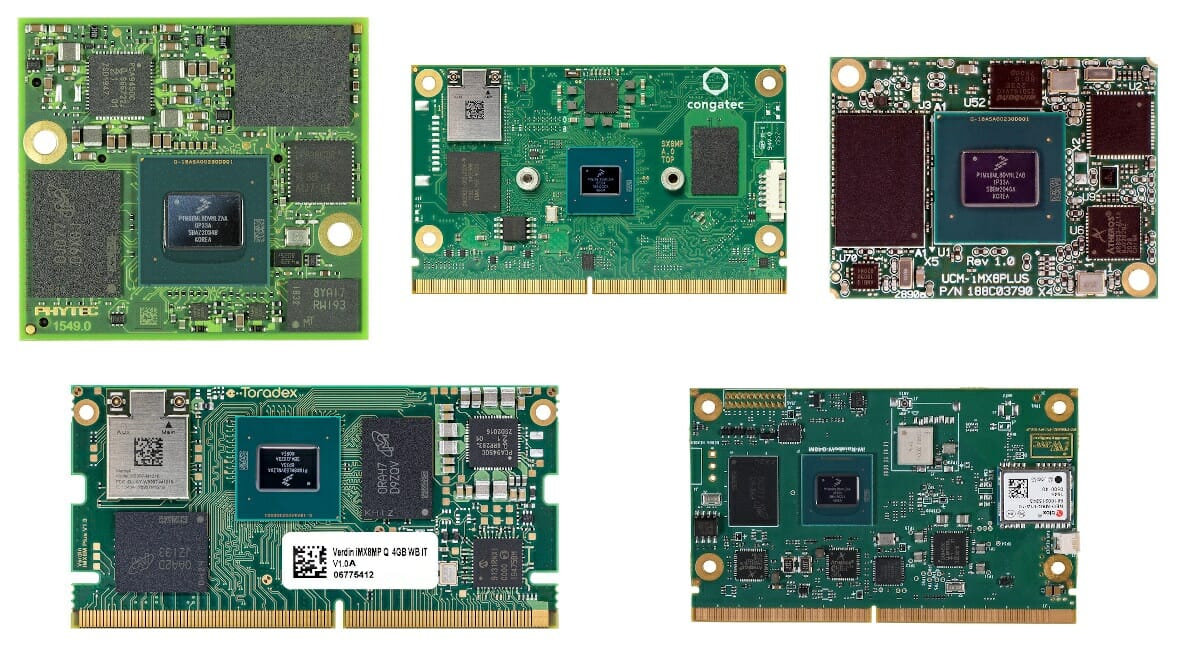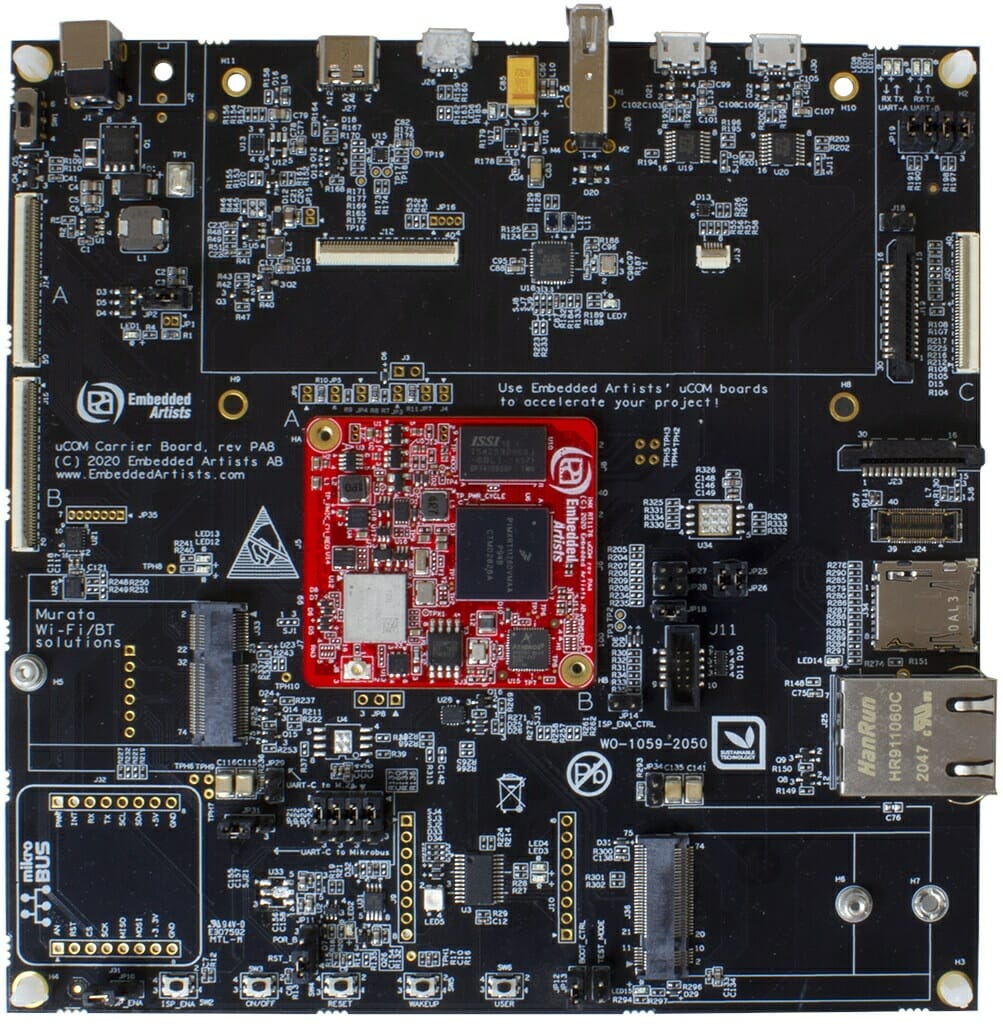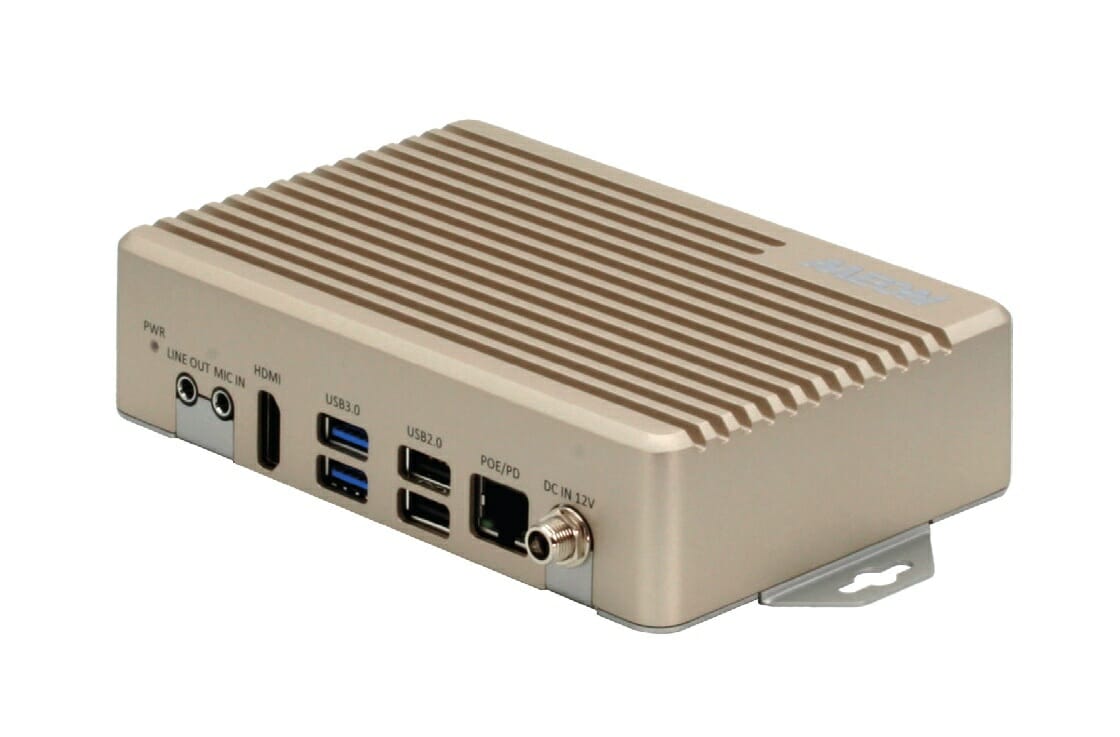We had seen many i.MX 8M Plus modules with built-in AI accelerator announced at Embedded World 2021, including two SMARC modules from Congatec and iWave Systems. ADLINK has added another of i.MX 8M Plus module compliant with SMARC 2.1 “short” standard with LEC-IMX8MP system-on-module equipped with up to 8GB RAM, 128 GB eMMC flash, as well as a development kit called I-Pi SMARC IMX8M Plus prototyping platform. LEC-IMX8MP module specifications Specifications: SoC – NXP i.MX8M Plus with quad-core ARM Cortex-A53 processor, Vivante GC380 2D GPU and GC7000UL 3D GPU, 1080p60 video decoder & encoder, optional 2.3 TOPS Neural Processing Unit (NPU) System Memory – 2/4/8GB LPDDR4L-4266 Storage – 16, 32, 64, or 128GB eMMC flash (build option) Wireless – Optional 802.11 ac/a/b/g/n WiFi 5 2X2 MIMO and Bluetooth 5.0 module 314-pin MXM 3.0 edge connector Storage – 1x SDIO (4-bit) compatible with SD/SDIO standard, up to version 3.0 Display – […]
Microsoft previews Azure Percept Edge AI development platform
Microsoft has recently announced the public preview of Azure Percept platform combining hardware and services to ease AI implementations at the edge through the use of Azure AI technologies and Azure cloud for device management, AI model development, and analytics. The hardware currently available includes the Azure Percept DK (Development Kit) with an NXP i.MX 8M powered WiFi & Bluetooth gateway/carrier board, the Azure Percept Vision system on module (SoM), as well as the optional Azure Percept Audio SoM with a 4-mic array. Key features and specifications: Azure Percept DK carrier board SoC – NXP iMX 8M quad-core Cortex-A53 processor System Memory – 4GB RAM Storage – 16GB flash Connectivity – Ethernet, WiFi and Bluetooth connectivity via Realtek USB – 2x USB-A 3.0 port, 1x USB-C port Security – Nuvoton NCPT750 Trusted Platform Module (TPM) version 2.0 Power Supply – 19V/3.4A Systems-on-Module Azure Percept Vision SoM based on Intel Movidius […]
NXP i.MX 8M Plus 2.5-inch Pico-ITX SBC supports UIO40-Express expansion modules
With NXP i.MX 8M Plus AI processor nearing mass production, we’ve seen many companies introduce i.MX 8M Plus systems-on-module at Embedded World 2021. But as one would come to expect, there should also be single board computers based on the new processor, and Advantech has unveiled the RSB-3720 2.5-inch SBC (aka Pico-ITX SBC) compatible with the company’s UIO40-Express expansion boards. RSB-3720 specifications: SoC – NXP i.MX8M Plus dual or quad-core Arm Cortex-A53 processor up to 1.8GHz (1.6 GHz for industrial temperature range) with Cortex-M7 real-time core, Vivante GC7000UL 3D GPU, 1080p60 H.265/H.264/VP9 decoder, 1080p60 H.265/H.264 encoder, 2.3 TOP/s Neural Network Accelerator System Memory – 4GB or 6GB LPDDR4 4000MT/s Storage – 16 GB eMMC Flash for OS, 8 MB QSPI NOR Flash for board information, microSD socket Video Output – HDMI 2.0a up to 3840 x 2160 at 30Hz Single or dual-channel 24 Bit LVDS with backlight power, 5/12V, Max. […]
NXP unveils i.MX 8ULP Cortex-A35/M33 secure processors with optional Azure Sphere certification
NXP may have just unveiled plans for i.MX 9 processor family with Arm Ethos U65 microNPU, and advanced security using the company’s EdgeLock enclave, but NXP also introduced new members to its popular i.MX 8 series with i.MX 8ULP and i.MX 8ULP-CS (Cloud Secured) processors. Both processors come with a mix of Cortex-A35 application processor(s) and Cortex-M33 real-time core, as well as Energy Flex low-power architecture and EdgeLock secure enclave, but i.MX 8ULP-CS includes Microsoft Pluton for secure cloud connectivity and lacks 2D/3D graphics and the HiFi 4 audio DSP. NXP i.MX 8ULP and 8ULP-CS key features and specifications: CPU i.MX 8ULP – Up to two Arm Cortex-A35 @ 1.0 GHz and Arm Cortex-M33 @ 216 MHz, i.MX 8ULP-CS – One Arm Cortex-A35 @ 1.0 GHz and Arm Cortex-M33 @ 216 MHz GPU (i.MX 8ULP only) – 2D GPU, and 3D GPU with support for OpenGL ES 3.1, OpenCLTM, Vulkan […]
NXP i.MX 9 processors to integrate Arm Ethos U-65 microNPU, EdgeLock secure enclave
NXP i.MX 6 and i.MX 8 processors are widely used in industrial boards and systems-on-module, and the company has now teased a new family with i.MX 9 processors integrating Arm Ethos-U65 1 TOPS microNPU, as well as the company’s EdgeLock secure enclave for increased security. The company did not provide that many technical details, so we still don’t know which CPU cores, GPU, and exact peripherals will be found in the processor. But we do know the i.MX 9 processors will be manufactured with a 16/12nm FinFET class of process technology optimized for low power, and features the “Energy Flex” architecture that combines “heterogeneous domain processing (independent applications processor and real-time domains with a separate low-power multi-media domain), design techniques, and process technology to maximize performance efficiency”. That means most blocks of the processor can be turned off for low power audio or CAN networking use cases, and other industrial […]
It’s raining i.MX 8M Plus systems-on-module at Embedded World 2021
NXP introduced i.MX 8M Plus AI SoC with a built-in 2.3 TOPS neural processing unit (NPU) last year, and we’ve already covered several early announcements about i.MX 8M Plus systems-on-module (SoM) with Variscite VAR-SOM-MX8M-PLUS and DART-MX8M-PLUS, TechNexion EDM-G-IMX8M-PLUS and AXON-E-IMX8M-PLUS respectively using SO-DIMM edge connectors and board-to-board connectors, as well as SolidRun i.MX 8M Plus SoM that was announced together with the HummindBoard Mate carrier board with dual Gigabit Ethernet. But as Embedded World 2021 Digital is taking place virtually until Friday, other companies have now made their own announcements of i.MX 8M Plus SoMs as the processor enters mass production this month, and since as far as I know, it’s pin-to-pin and software compatible with earlier i.MX 8M Nano/Mini SoCs, the update must have been easy. That means we’ve got a longish list of modules, and I have probably missed some. Supported operating systems are basically the same across […]
Embedded Artists launches 1GHz NXP i.MX RT1176 Crossover MCU module and devkit
Microcontrollers used to be those cute little chips clocked at 8 MHz, but it’s now common to have MCUs clocked at one or two hundred Megahertz, and with Cortex-M7 cores, several hundred Megahertz is now possible, and NXP even pushed the limit to one Gigahertz with their i.MX RT1170 series of Cortex-M7/M4 Crossover MCUs announced over a year ago. Embedded Artists has now made a computer-on-module and a corresponding devkit based on NXP i.MX 1176 Crossover MCU clocked at one Gigahertz. iMX RT1176 uCOM MCU module delivers up to 6468 Coremarks, comes with up to 32MB SDRAM, 16MB QSPI flash, optional WiFi and Bluetooth, and various peripherals in a tiny 45x42mm form factor. iMX RT1176 uCOM module Specifications: SoC – NXP i.MX RT1176 processor with Cortex-M7 core up to 1 GHz/800MHz (Commercial vs industrial), Cortex-M4 core up to 400/200 MHz, 2MB internal SRAM, 2D GPU with OpenVG 1.1 support and […]
PoE powered AI Edge computer combines NXP i.MX 8M SoC with Google Edge TPU
AAEON has introduced several BOXER AI edge computers over the years either powered by an NVIDIA Jetson module, a HiSilicon HI3559A Arm SoC, or an Intel processor combined with Movidius Myriad AI accelerator. The latest model, BOXER-8521AI, combines an NXP i.MX 8M SoC with Google Edge TPU AI accelerator, and offers 1GB RAM, USB ports, a 40-pin external I/O connector, and 12V or PoE power inputs. AAEON BOXER-8521AI specifications: SoC – NXP i.MX 8M SoC quad-core Cortex-A53 processor with Cortex-M4F real-time core, 2D/3D GPUs AI Accelerator – Google Edge TPU ML accelerator coprocessor System Memory – 1GB LPDDR4x RAM Storage – 8GB eMMC flash, MicroSD card slot Video Output – 1x HDMI 2.0a port Audio – 1x Mic-in, 1x Line-out, optional 2x MEMS microphones Connectivity Gigabit Ethernet RJ45 port with PoE (802.3at) Optional? WiFi 2×2 MIMO (802.11b/g/n/ac 2.4/5GHz) & Bluetooth 4.1 plus two antennas USB – 2x USB3.2 Gen 1 […]


